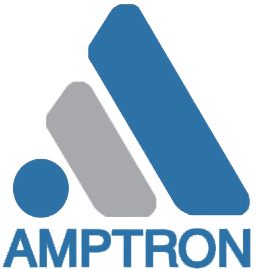"Workplace Lightning Safety: What are the Standards and Regulations?"
- Amptronic Blogger

- Jul 11, 2024
- 2 min read
Updated: Jul 20, 2024

In lighting technology, the shift from traditional light bulbs to modern LEDs has occurred. Workplace lighting now follows strict standards and regulations. This blog covers key standards and regulations, while focusing on workplace ordinance for employee safety and health.
LED technology has rapidly grown due to high luminous efficacy, energy efficiency, long service life, impact resistance, minimal heat generation, and non-toxic materials. This technology allows for permanent installation of lamps, offers design freedom, and uses targeted light fixtures. Optical systems direct light efficiently, and brightness and color are easily controlled for wellbeing and performance enhancement. LEDs are now used in various applications beyond effects lighting, such as displays and transportation. Compliance with workplace illumination standards is important.
ACTIVITIES | Ēm | UGRL | RA |
Filing | 300 | 19 | 80 |
Writing, Reading, Data processing | 500 | 19 | 80 |
CAD workstation | 500 | 19 | 80 |
Conference and meeting rooms | 500 | 19 | 80 |
Reception counter | 300 | 22 | 80 |
Archive | 200 | 25 | 80 |
Terms Explanation
Ēm: Minimum illuminance value which shall be met at all times.
URGL (Unified Glare Rating): This is a measure of glare used by lightning designers to quantify discomfort glare caused by bright light sources.
RA (Color Rendering Index): Defines the ability of a light source to identify colors.

Standards for Workplace Lighting
The DIN standards are the basis for workplace lighting, setting quantitative and qualitative requirements. They are national versions of European EN standards, reflecting the state-of-the-art and used in contracts and legal disputes.
DIN EN12464
DIN EN12464 specifies lighting requirements for indoor workplaces, covering visual performance and comfort for various tasks, including monitor work. It allows flexibility for innovative lighting systems using daylight, artificial light, or a mix. The standard includes criteria like illuminance, glare, light color, and more. Detailed requirements for rooms, tasks, and activities are provided in section 5, including values for illuminance, glare, color rendering, and exceptions. Special attention is needed for areas requiring high color rendering (Ra ≥ 90) when using LED lighting.
DIN EN12464-2
DIN EN 12464-2 focuses on lighting requirements for outdoor workplaces, emphasizing nighttime tasks. It provides detailed specifications in section 5, covering illuminance, uniformity, glare evaluation, color rendering index, and exceptions.
DIN EN1838 – Lighting Applications – Emergency Lighting
Emergency lightning is activated when normal artificial lighting fails and must have an autonomous power supply. It includes safety lighting for escape routes, anti-panic lighting, and safety lighting for workplaces in high-risk areas. The goal is to ensure personnel can safely stop work, identify escape routes, and exit the building during a power failure. Stand-by lighting allows tasks to continue uninterrupted. DIN EN1838 sets minimum standards for planning, installation, and maintenance of stand-by lighting. See table for safety lighting requirements. Additional specifications can be found in the standard.
Safety Lighting Requirements for Illuminance
SAFETY LIGHTING | ILLUMINANCE | COLOR RENDERING INDEX |
First-Aid stations | E ≥ 5 lx * | Ra > 40 ** |
Firefighting equipment and fire alarm systems | E ≥ 5 lx * | Ra > 40 ** |
Escape routes | E ≥ 1 lx * | Ra > 40 ** |
Anti-panic lighting | E ≥ 0.5 lx * | Ra > 40 ** |
Workplaces subjected to extraordinary danger | E ≥ 15 lx and E ≥ 10 % | Ra > 40 ** |


Comments